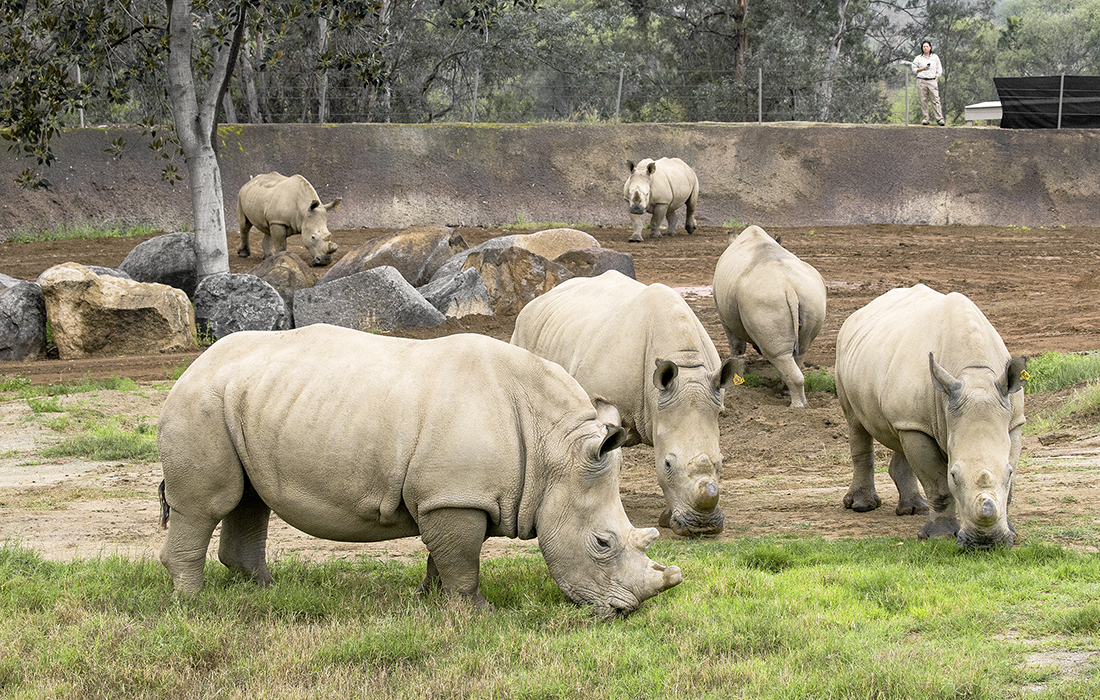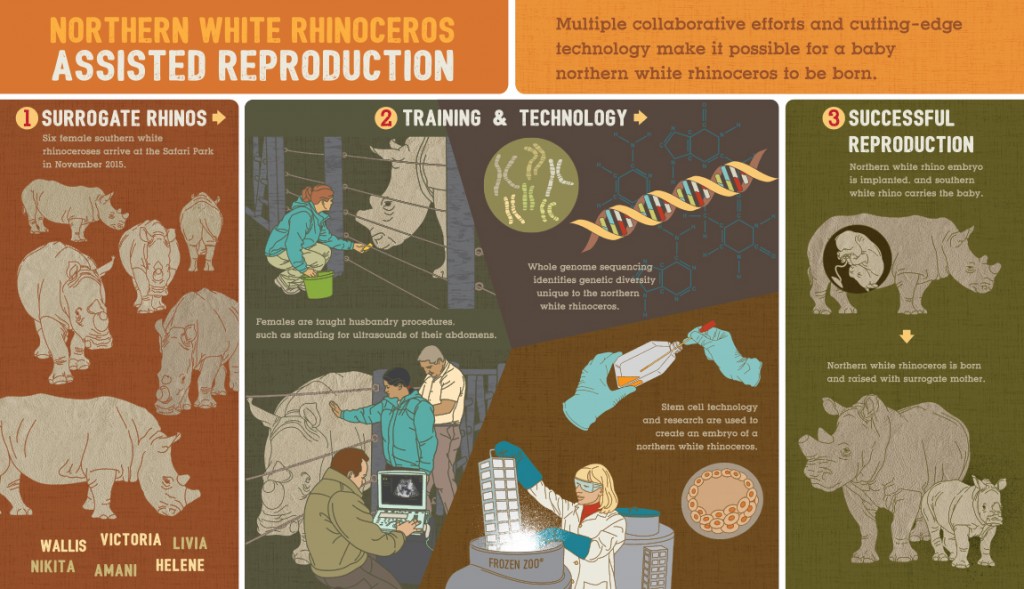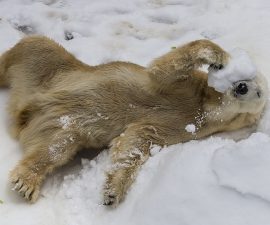Six southern white rhinos at the Safari Park’s new Nikita Kahn Rhino Rescue Center have a vital role to play in white rhino conservation research.
BY Wendy Perkins
Photography by Ken Bohn
Rhinos in their native habitats are under siege from poaching. The effect is alarming: it’s estimated that three rhinos are killed each day for their horn. San Diego Zoo Global is committed to saving this iconic animal from extinction by supporting anti-poaching efforts, changing attitudes, and using science and technology at the Nikita Kahn Rhino Rescue Center (RRC).
Located at the San Diego Zoo Safari Park, the facility is dedicated to the conservation of white rhinos—including northern white rhinos—through assisted reproductive techniques. Six female southern white rhinos arrived at the facility from South Africa last November, and the project is moving forward. Nola, the Park’s beloved northern white rhino that passed away last year, is the project’s muse. “A lot of the urgency for developing the Rhino Rescue Center and working toward saving the northern white rhino was inspired by Nola,” said Steve Metzler, associate curator of mammals. The idea has been under consideration for years. However, “the loss of all but a few remaining northern white rhinos in just the past several years has been a big blow and a catalyst to saving them. Having Nola here as we were beginning this project was certainly a big motivation,” Steve added.
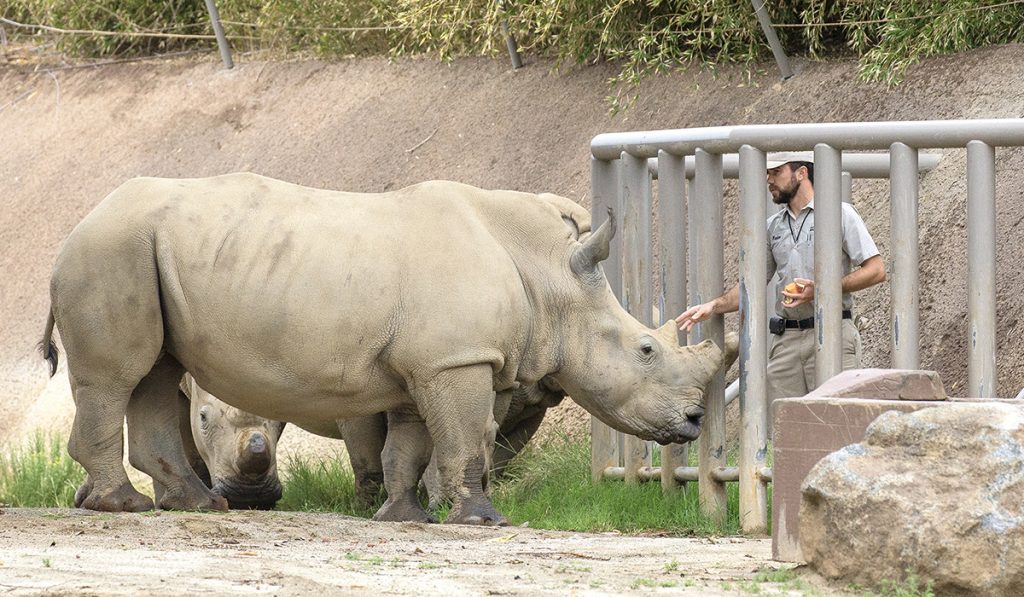
A STRONG FOUNDATION
Keepers work with the rhinos daily to establish a bond of trust.
The RRC is located in the former black rhino exhibit and barn. The area was remodeled and upgraded to meet the long-term needs of this type of project. A field lab has two different storage rooms: one for food and another for veterinary and reproductive equipment. A lab outfitted with a stainless steel work space allows staff from our Institute for Conservation Research, as well as visiting researchers, to prep and examine samples as soon as they’ve been collected. There are computers for the researchers to use, as well as some dedicated to the record-keeping needs of the rhino keepers and trainers.
The RRC was created with the future in mind. “We built this so we can grow for years to come, throughout the goals of the project,” explained Steve. The facility includes a two-acre exhibit, eight large outdoor yards, a temperature-controlled barn, and a training chute. The latter will be a vital tool for the project. It was designed based on input from the trainers, veterinary staff, and researchers, among others, with a scale in the floor of the chute that allows for obtaining accurate weights. Panels and doors in the walls make it easy to do procedures like collecting a blood sample from the lower leg, palpating an abdomen, or performing an internal ultrasound.
The keepers spend a good part of their day building relationships with and gaining the trust of the rhinos. The rhinos are being trained, through positive reinforcement, to receive any needed medical procedures, since they may serve as future surrogate mothers for northern white rhinos (see infographic above).
Dion Rice is one of the RRC keepers. “It is so inspiring and exciting to be a part of this,” she said. “This could be one of the the biggest contributions I can make toward conservation.” Dion has years of experience caring for and training elephants and other animals. “I am taking what I’ve learned and using it with these animals—which are very different—to establish a solid program.”
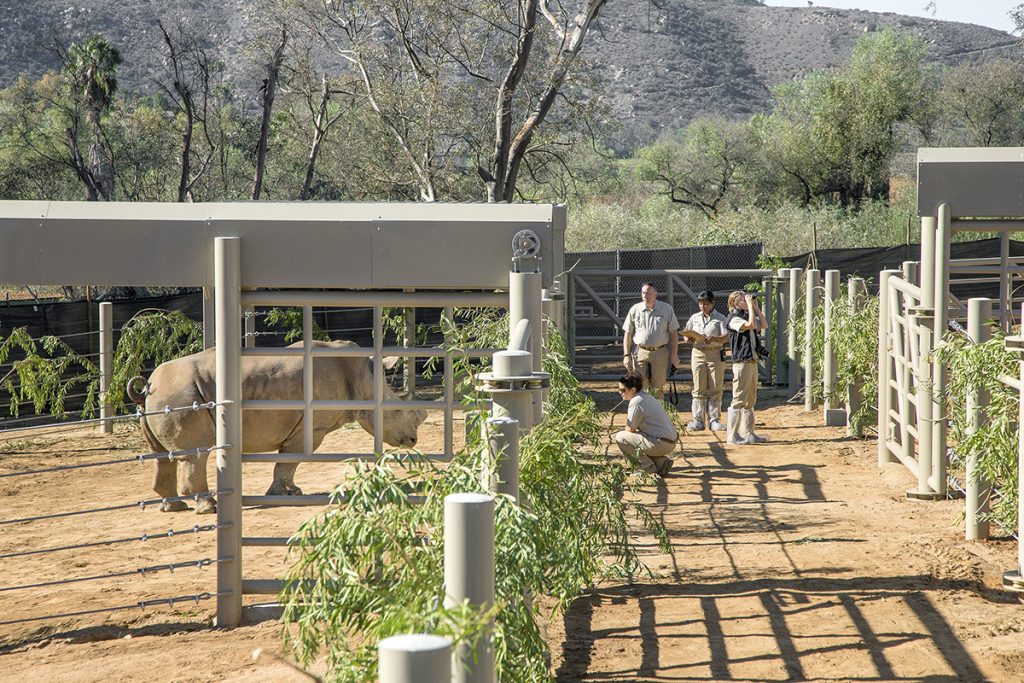
BEHIND THE SCENES
The well-planned design of the RRC includes pens for up-close observation.
The long-term training goal for the rhinos is to be able to stand comfortably and calmly in the chute for a variety of examinations. But first things first: how do you get a rhino to go where you want? “We’ve been working with them on a group ‘recall’ right now,” said Dion. “They are learning to come to keepers when they hear three short blasts of a coach’s whistle. They’ve caught on very quickly—they are quite smart!”
Having a strong bond with their keepers is important, but as Steve points out, “these rhinos also need to be comfortable with strangers and groups of people showing up.” San Diego Zoo Global is working with specialists from other zoos and universities, so there will be many people visiting and working at the RRC. “We’ve already had folks come from Cincinnati and Germany to do exams and establish a baseline of how the females look reproductively,” Steve said.
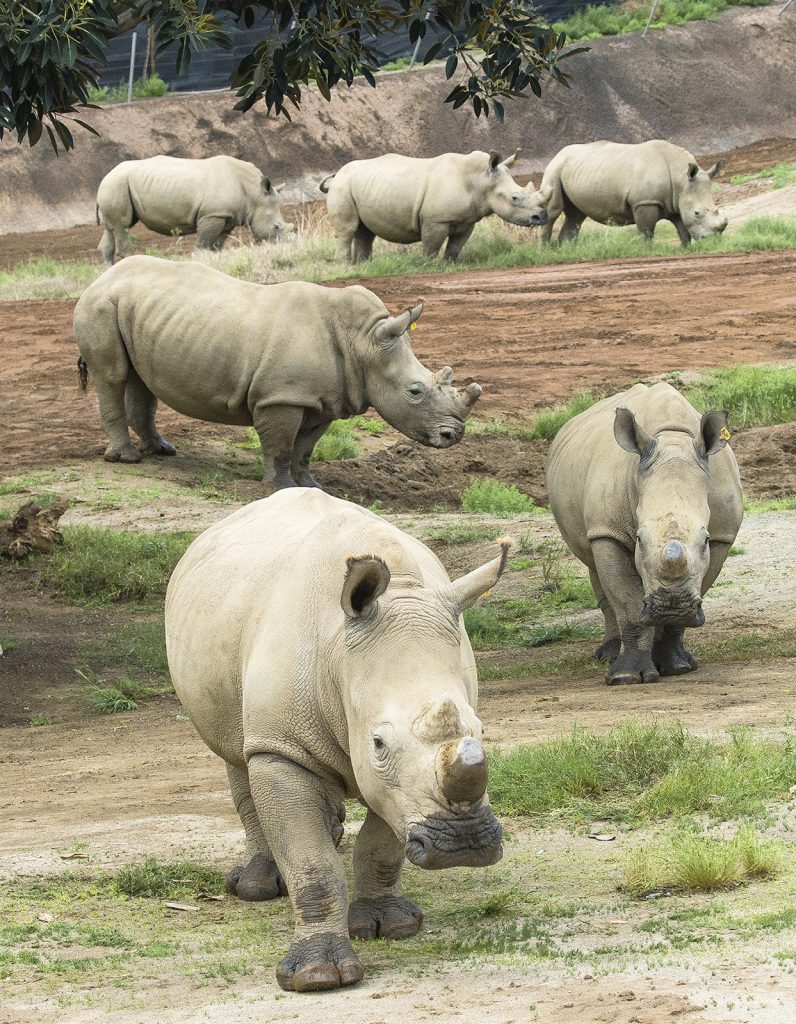
SETTLED IN SAN DIEGO
The six female rhinos brought to the US to serve as surrogate mothers quickly became comfortable with their new home.
On any given day, visitors to the Safari Park may be able to see one or more of the southern white rhinos as the Africa Tram passes by the RRC. In collaboration with other accredited facilities, San Diego Zoo Global has been working for decades to keep a sustainable population of rhinos safe in zoos, while also working to protect them in their native habitat—an uphill battle for all concerned. The RRC expands our commitment to help save rhinos.
“We’re doing what I believe is the future of saving wildlife by using assisted reproductive techniques,” said Steve. “There are species for which there is no hope for natural breeding anymore—like the northern white rhino. This is really, I think, the future.”

